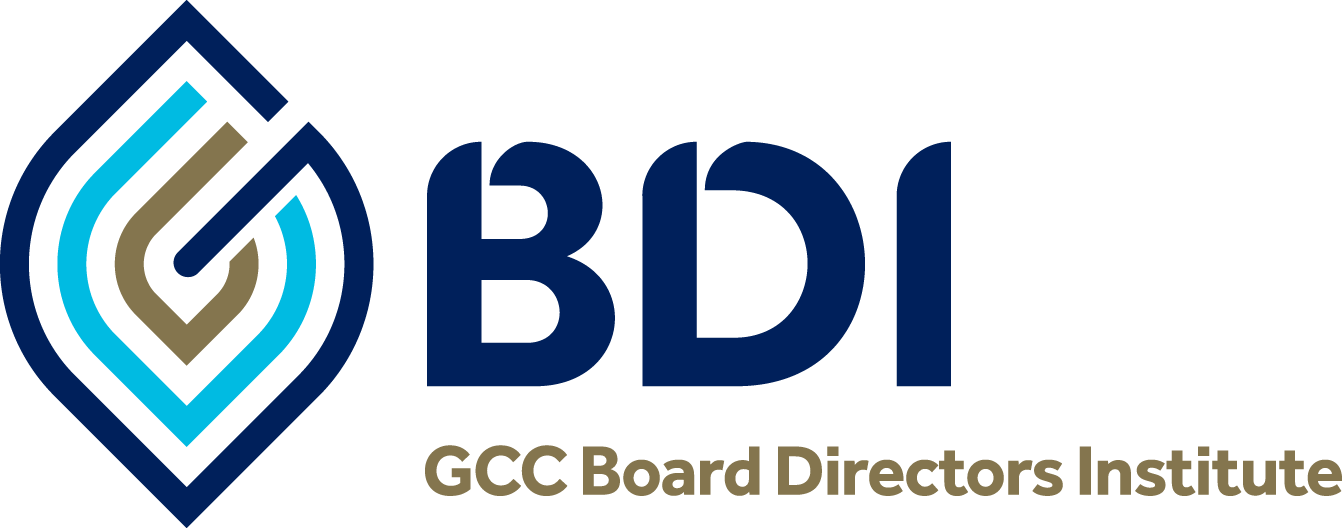- Home
- shargiil bashir chief sustainability officer fab
Shargiil Bashir, Chief Sustainability Officer, FAB
Shargiil Bashir, Chief Sustainability Officer, FAB

Shargiil Bashir is the Chief Sustainability Officer and Executive Vice President at First Abu Dhabi Bank (FAB). In this role, Shargiil is responsible for developing, leading, and implementing the bank’s ESG strategy and initiatives. He was among the main drivers behind FAB joining the UN convened Net-Zero Banking Alliance as the first bank in the UAE and GCC to make a net-zero commitment by 2050. Under his leadership FAB was awarded Best Bank for ESG in the UAE 2022 at the Euromoney Awards for Excellence. In November 2022, he was selected by LinkedIn as Top Voice Green in Middle East.
He is a seasoned banker and experienced leader with over 20 years of experience. He has led various aspects of Corporate Governance, Strategy, Risk Management, Risk Assurance, and Sustainability throughout multiple countries.
Before joining FAB in November 2020, Shargiil held various senior leadership positions at Danske Bank, based in Denmark.
Shargiil holds a Bachelor of Business Administration and an Executive MBA from the Copenhagen Business School in Denmark – and has completed Executive Education at INSEAD in France.
- What are the board's responsibilities in overseeing the company's ESG strategy and performance?
- The role of the board of directors regarding environmental, social, and governance issues is that of oversight. In its oversight remit, the board is responsible for ensuring that the company’s strategy is appropriate and will deliver results, and for overseeing associated material risks.
- The board should be the final approver of a company’s ESG ambitions, strategy and performance.
- Given that an ESG strategy should be aligned with the business strategy and focus on material risks and business drivers, the board has to understand the ESG messaging and how those risks are being mitigated. If this is a new area of focus for the board and the company, directors may need to assign detailed oversight to specific committees to help the ESG strategy launch smoothly. Ultimately, ESG issues will be relevant to all committees.
- How should the board ensure that ESG issues are given appropriate attention and consideration during board meetings and discussions?
- There are several approaches that can be followed, and company boards pick the approach that is the most effective for them.
- Board oversight of ESG issues can reside with:
- the full board;
- an existing board committee;
- a newly formed, dedicated ESG committee.
- The spotlight on ESG issues can also be set by the full board and one or more committees or by multiple committees covering ESG issues that fall within their charter mandates and areas of expertise. Companies may use a combination of these approaches.
- EY’s review of the 79 Fortune 100 companies that filed proxy statements in 2021, revealed that of the 85% of companies disclosing board committee oversight of environmental and social or corporate social responsibility matters (compared to 78% in 2020), most allocate this responsibility to the nominating and governance committee. EY’s report emphasizes, however, that disclosures also evidenced the full board’s active oversight in sustainability risks and opportunities notwithstanding committee delegations.
- What do you think the board's approach should be to long-term sustainability and ESG risks in its strategic planning process?
- There is no one-size-fits-all approach for allocating ESG oversight responsibilities among the board and the delegation of responsibilities may change over time. How board oversight is effected at any given company depends on specific company circumstances, including:
- the company’s business and industry;
- board composition and culture;
- board committee structure, composition, scopes of responsibility, and workloads;
- existing company processes and practices relating to the oversight of the enterprise risk management (ERM) program;
- ESG-related functional areas;
- the significance of particular ESG issues to the company; and
- management-level expertise and staffing.
- The key for companies is to develop an oversight structure and associated accountability (e.g., via committee charters and/or corporate governance guidelines), as well as internal processes and procedures, that are appropriate for the company.
- Companies should then develop corresponding disclosure to inform investors and other stakeholders as to how the board is overseeing these issues and that the oversight is supported by appropriate documentation and processes.
- There is no one-size-fits-all approach for allocating ESG oversight responsibilities among the board and the delegation of responsibilities may change over time. How board oversight is effected at any given company depends on specific company circumstances, including:
- What steps should the board take to monitor and assess the company's ESG performance and initiatives on an ongoing basis?
- At FAB, we adopted a particular approach to this topic which can be successful way of addressing it. We established a Board Risk & ESG Committee with specific ESG mandate and ESG-related KPIs. Its remit includes:
- Responsibility to provide oversight and advice to the Board in relation to current and potential future ESG risk exposures;
- Determination and approval of the bank’s ESG risk appetite and tolerance;
- Promotion of ESG risk awareness across the bank;
- Revision of non-financial risks.
- This Committee reviews the bank’s approach to financed emissions, approves emission reduction targets for financed emissions, and approves the ESG risk framework and ESG policy.
- Such Committee is the highest authority on ESG performance as it monitors and reports on progress by engaging with the bank’s leadership and business lines.
- At FAB, we adopted a particular approach to this topic which can be successful way of addressing it. We established a Board Risk & ESG Committee with specific ESG mandate and ESG-related KPIs. Its remit includes:
- How should the board stay informed about emerging ESG trends, regulations, and best practices in the industry?
- There isn’t a right approach as to how often management should report on ESG issues to the board and board committees. Practices vary based on specific company circumstances, including board oversight structure; management structure and staffing; company size, type, and industry; regulatory developments and trends; the significance of each respective ESG issue to the company; investor and other stakeholder pressures and priorities; and the company’s strategies with respect to these issues. Different environmental, social or government issues may likely warrant a different cadence and process.
- A regular reporting cadence is important in light of the directors’ fiduciary oversight responsibilities. At many companies, the full board receives reports on the overall ESG strategy, investor engagement and communications strategy at least annually.
- Discrete ESG issues (and related risks and opportunities), such as climate change, D&I, human capital management, ethics and compliance, supply chains and responsible sourcing, and so forth, have different cadences, with particularly significant or emerging issues (specific to company circumstances) addressed more frequently, and progress against prior targets and company commitments, if any, regularly included in board reports. Depending on company-specific circumstances and specific ESG issues, some issues are discussed quarterly, others annually or semiannually, and yet others, at every meeting or on an as- needed basis.
- When a specific board committee is delegated more detailed oversight of the company’s ESG strategy and meets to discuss these matters more frequently, reports to the full board may be less frequent, but vary depending on the issue. The specific issues and metrics reviewed will also vary based on what is important to the company, its customers, and its investor base.
- Members of the Board have fiduciary duties to adequately inform themselves, to understand and assess material issues--including ESG-related issues, in making business decisions, to implement oversight structures and, in some cases, to investigate red flags relating to such issues. Although the expertise of the board on a particular ESG topic may often be gained through ongoing professional responsibilities, self-study, other board service, and/or reports from senior management, in some instances, directors could benefit from training focused on ESG matters.
- Some companies may choose to add directors with specific expertise in certain ESG areas, especially if any particular ESG topic is a transformational issue to the company (e.g., renewable energy, artificial intelligence, electric vehicles, or industry transformation). In 2021, the U.S. Securities and Exchange Commission (SEC) Commissioner Allison Herren Lee specifically called on companies to consider ways to enhance the ESG competence of their boards, which efforts could include integrating ESG considerations into their nominating processes in order to recruit directors that will bring ESG expertise to the board; training and education efforts to enhance board members’ expertise on ESG matters; and considering engagement with outside experts to provide advice and guidance to boards.
- ESG metrics which are determined to be the most significant to a company should be reported to the board. ESG oriented presentations to the board should show trends over time and progress against established targets, potentially including benchmarking data to place the information in context and modeling scenarios, as needed, to show potential future impact. As a result of the breadth and distinctiveness of potential ESG topics and company-specific variations, there is no uniform template or dashboard for ESG issues or metrics.
- How has First Abu Dhabi Bank (FAB) engaged in COP28 and initiatives aimed at tackling climate change?
- FAB is actively and effectively engaged in COP28.
- Among the bank’s key engagement themes we have privileged topics and initiatives such as:
- Sustainable finance: support scaling available sustainable finance in the region, and support the UAE to become an Islamic green finance hub.
- Net zero transition: become the number one go -to banking partner for clients in the region in their transition journey, while seizing the associated business opportunities.
- SME climate action acceleration: accelerate ESG awareness among SMEs by working with corporates and empowering SMEs to take climate action and to build resilient business for the future.
- Carbon market: as a leading regional bank, FAB plans to engage with clients and relevant global/national stakeholders to raise awareness around carbon markets and support its clients.
- Nature: FAB aims to better understand the impact of its business on nature, as financial institutions should take action to support nature-based solutions.
- Social: FAB encourages young adults to question the role of sustainability in their chosen areas of study and career.
- FAB secured key partnerships across key industries, among public and private entities to address topics within its engagement strategy for COP28.
- The bank’s initiatives widely range from thought leadership sessions, themed publications, multiple engagements and campaigns to drive cross-industry cooperation to tackle climate change.
